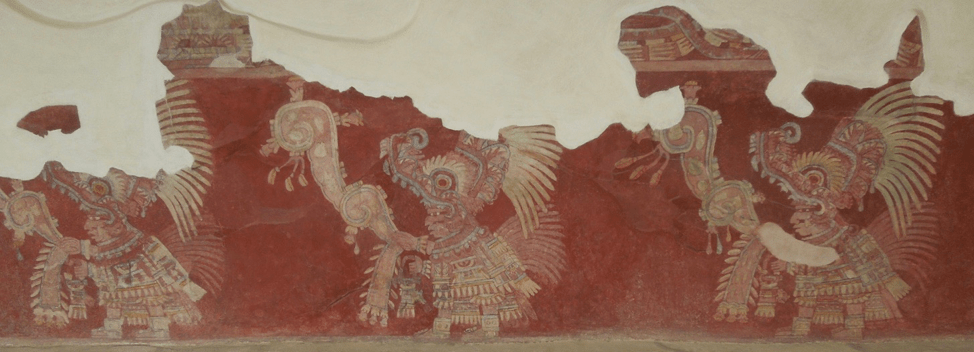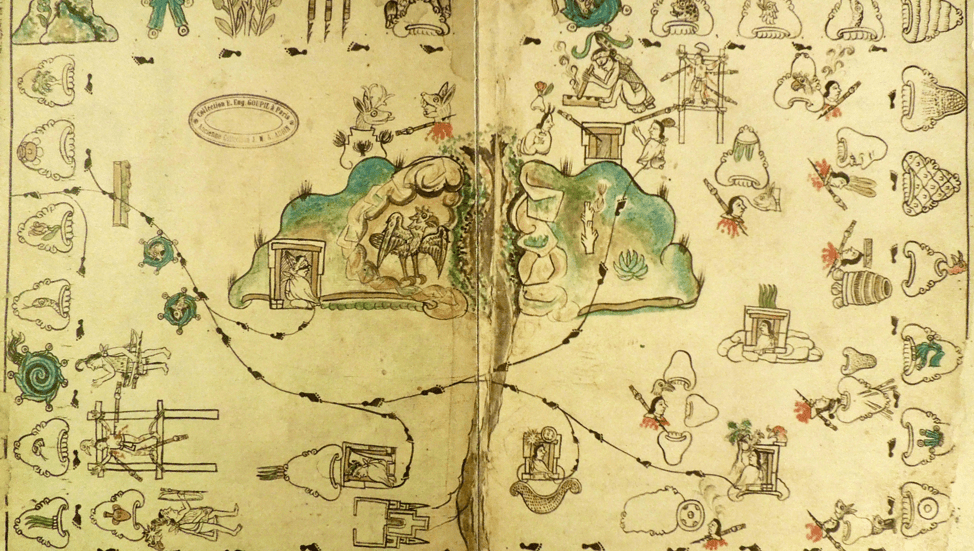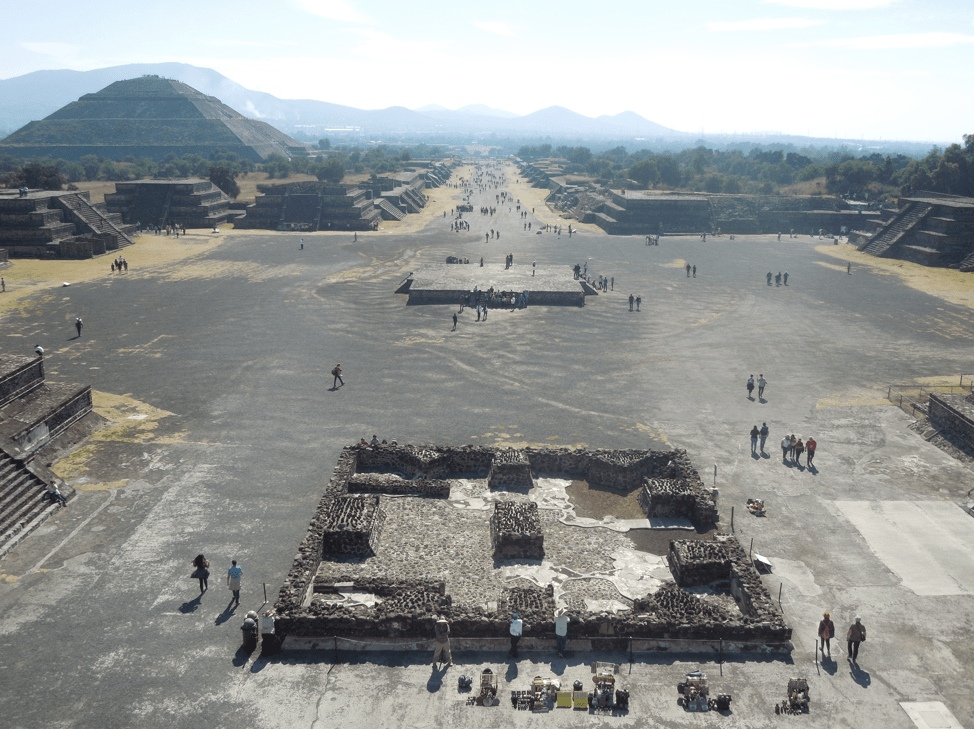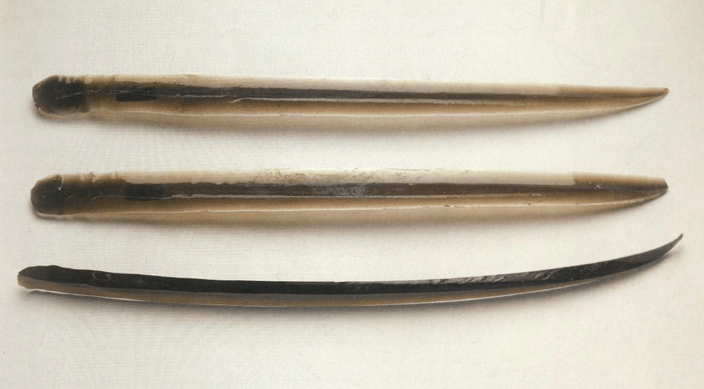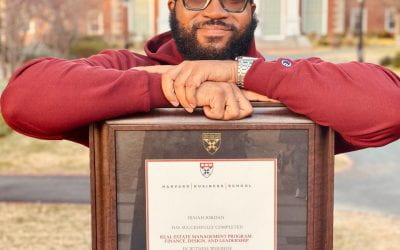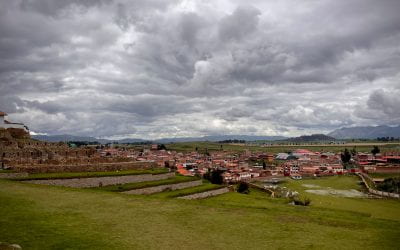
About the Author
Trent Barnes is a Ph.D. Candidate in the History of Art and Architecture at Harvard and a William R. Tyler Fellow of Pre-Columbian Studies at Dumbarton Oaks (2018-2020). His dissertation, “To Walk the Space of Time: Emptiness and the Production of Bodies in the Empire of Teotihuacan, Mexico,” comprises the first monographic study of Teotihuacan architecture. He previously held the William C. Coleman and Pam Coleman Memorial Fund Fellowship at the Metropolitan Museum of Art (2017-2018) and earned a B.A. in Art History from Columbia University.
Walking, Counting, Bleeding
The Sacred Economy of Teotihuacan, Mexico
Since joining my middle school’s cross-country team, I have maintained a lifelong interest in distance running. To run in rural South Carolina, where I spent my earlier years, required the navigation of sparely trafficked back roads from memory. While landmarking initially played an important role, I eventually strengthened my ability to recollect aspects of space and orientation. I have thus been intrigued by the emphasis found in Mesoamerican art and architecture on long distance foot journeys and the manners in which space might be described or remembered. Human figures in the murals of the ancient city of Teotihuacan, Mexico most often perform three actions: walking, vocalization and “scattering” (Figure 1). From where and towards what do these persons walk? If they speak or sing, what do they say? In scattering, what drops from their hands? While these behaviors doubtless featured in Teotihuacan religion, these images perhaps also evoked aspects of the city’s economic life. Walking was not a neutral behavior at Teotihuacan, nor counting and bloodletting, the self-infliction of bleeding, the two alternate activities that I propose these scenes depict.
Teotihuacan, the largest urban development of pre-Hispanic Native America, flourished from c.150-550 C.E. Located 42 kilometers northeast of contemporary Mexico City, it cultivated foreign contacts of a political and economic nature with distant capitals like Tikal, Copán and Monte Albán. Teotihuacan’s scale and complexity challenge many indices of “civilization” used to describe the Old World, for despite its 150,000 residents and metropolitanism, the city never used the wheel or utilitarian metals and seldom wrote script. However, these Eurasian innovations perhaps found their Teotihuacan counterparts in the strong cultural emphases placed on walking, counting and the refinement of obsidian, black volcanic glass.
The region of Mesoamerica had no beasts of burden, meaning all movement transpired on foot. Consequently, walking emerged as the subject of prominent cultural expressions. Mayan texts from Copán describe the religious pilgrimage of that city’s founder, K’inich Yax K’uk’ Mo’, to Teotihuacan, where he attained the rites necessary to enter rulership in his home 1,400 kilometers away. This ruler’s journey, ranging from the verdant tropical rainforests of Central America to the arid Mexican highlands, was likely undertaken on foot to demonstrate fitness for office. In later Central Mexico, foundation narratives of a given polity invariably began with a period of migration and concluded with the polity’s performance of a ritual ambulation of their territory to establish borders (Figure 2). Religiously speaking, when Mesoamericans issued prayers, their accompanying bodily motion was not counting beads or shuckling, the gentle swaying of the torso, but the rapid movement of the feet. Holding their upper bodies motionless, Maya rulers, ajawob, were often shown to raise the heel of one or the other foot in turn in “dances” of walking that permitted them to embody the divine.
Mesoamerican pilgrimage rituals perhaps glorified walking’s foundational role for regional economic activity. Walking served as the primary method by which goods circulated in Mesoamerica, whose equatorial location and variable altitudes ensured that coveted resources occurred in restricted zones. For instance, cacao, raw chocolate, which served as Mesoamerican currency, could be sourced only from the coastal lowlands. Among the Mexica (popularly known as the “Aztecs,” c. 1300-1521 C.E.), a class of walking merchants known as the pochteca arose to meet demand for interregional produce circulation. As many as one third of later Central Mexican adults labored to procure foreign products for import and commoditization in the market-city of Tlatelolco.
Mexica painted screenfold books incorporated small lines of black footprints to indicate narrative direction and the passage of time, their “reading” metonymized to walking. However, pohua, a Nahuatl term often translated as, “to read,” more properly conveys, “to count.” The latter verb more aptly describes processions that occurred on Teotihuacan’s central-most monument, a grand ceremonial causeway known as the Miccaotli, or “Avenue of the Dead” (Figure 3). This road measured more than three kilometers in length and forty meters in breadth, while from south to north, its elevation gained thirty meters. The result of laborious earth sculpting, its aesthetic experience is more akin to that encountered in artworks by Maya Lin than walking Mexico City’s Paseo de Reforma. Teotihuacanos premeasured the length of the Miccaotli and the floorplans of other monumental constructions along its course employing a standardized unit of 83 centimeters. These measurements enciphered urban space with counts of astronomical time regarded as sacred, such as 260, 365 and 584, which respectively measured the days of the religious calendar, the solar year, and one cycle of the planet Venus. Thus, the city plan employed urban space as an immaterial medium for the representation of time. The footfall of a walker at Teotihuacan enumerated sacred durations, whether consciously or not. The strong emphasis placed on enumeration in the urban plan provides some indication that the vocalizations depicted in the walking murals concern matters of astronomical accounting.
The most fundamental Mesoamerican calendrical calculation was [73 x 260 = 52 x 365 = 18,980]. This expression is known as the “Calendar Round” and the numerals comprising its identity set found early expression in the Teotihuacan urban design. 18,980 enumerated the discreet permutations of named days that resulted from the simultaneous and recursive running of the 260-day religious calendar alongside the 365-day solar calendar over the course of 52 solar years. Central Mexicans experienced the conclusion of an old Calendar Round and the beginning of another – a transition in the numbering of days from its sequential vertex of 18,980 down to the mathematical “empty set” of zero – as a moment of intense anxiety. Sacrificial blood was spilled, possession smashed, fires extinguished, and a deathlike stillness imposed. All wealth was attenuated or disappeared; a culture deeply concerned with movement stood motionless, instead observing the procession of stars. Particularly, Mexicans sought the Pleiades, which appeared one day before the solar zenith and whose midnight transit marked zero in the regenerated cycle of time. Indigenous Mexicans called this constellation Tianquitzli, meaning “Marketplace,” from tian, “to heap.” Commonly experienced but once per lifetime, the passing of a Calendar Round was a consequential rite of passage. It is no triviality that the activity Central Mexicans nominally performed in observing this occasion was that of, “studying the Marketplace.” Would wealth, like time, regenerate following its symbolic depletion to zero?
A darker dimension of Teotihuacan sacred accounting appeared in a mass human sacrifice of around 260 persons conducted in c. 200 C.E. Found within the Ciudadela, a large enclosed basin in the city’s south, Teotihuacanos arranged these bodies into groupings of 8, 9, 13, 18, and 20, fundamental devisors in Mesoamerican calendrics. Oxygen isotope analysis, which measured relative trace quantities of oxygen in the individuals’ diets to detect possible geographical origins, was conducted on 41 skeletons, revealing that most originated in distant regions of Mesoamerica, including Michoacán, Oaxaca, the Guatemalan highlands and Gulf Coast. Before interment, Teotihuacanos scattered thousands of obsidian projectiles over the corpses. In the absence of utilitarian metals, well-worked obsidian was Mesoamerica’s most lethal weapon. The scatter pattern of the blades’ distribution is akin to that which might have resulted from the scattering motion found in the paintings. In comparable Maya scenes, the objects descending from the extended hands of scattering ajawob have been securely identified as droplets of blood spilled during royal self-cutting rituals. At Teotihuacan, the descending objects often appear green, depicting jade jewels. Nonetheless, alternate mural groups show scattering figures flanked by bloodletting instruments, indication that these paintings likened Teotihuacan blood to precious jades. 16th century Central Mexicans informed Bernardino de Sahagún that they performed blood sacrifice as the, “payment of a debt,” – that incurred from time’s persistence.
Labor in Teotihuacan’s internal economy appears to have been rather undiversified. In addition to a possible merchant class, it consisted of an agricultural industry that fed no more than one third of city residents and a dedicated cohort of obsidian refiners. Around 400 workshops for the production of this volcanic glass existed at Teotihuacan, some specialized to produce a single blade type (Figure 4). A recently excavated shop presented 800,000 discrete obsidian artifacts, while some Teotihuacan-era mine shafts at Pachuca, Hidalgo descend 50 meters underground; Teotihuacan obsidian manufacture was in every sense industrialized. However, little evidence exists that Teotihuacanos traded this resource. Nonetheless, the city consumed numerous exotic goods and copious labor hours. Most notably, beneath the human sacrifices of the Ciudadela, Teotihuacanos deposited an excess of 100,000 fine dedicatory objects, including obsidian blades, luxury ceramics, jade sculptures, other greenstones, hematite, pyrite, liquid mercury, Atlantic and Pacific seashells, bolts of cloth (now visible as faint impressions in the dust), plant fronds, rubber balls and fragments of what excavators believe to have been human skin. Many of these goods could be sourced only from distant regions, attesting Teotihuacan’s early economic interests abroad. Above these sacrifices, Teotihuacanos erected the Temple of Quetzalcoatl, which incorporated an estimated 399 monumental sculptures into its façade, all carved from stone using only stone tools (Figure 5). This building was among the most labor-intensive in Mesoamerican history. That the sacrificed bodies within the temple arrived from distant regions and were interwoven with weaponry indicates that the great volume of wealth and labor by which they were ensconced did not arrive to Teotihuacan through amicable bartering.
In my gap year between entering graduate school and college, I worked as a financial analyst investigating the respective roles played by banks, borrowers and regulators in outcomes of the 2008-2010 mortgage crisis. In addition to gaining an interest in accounting, I also developed an intimate familiarity with the idea that most members of industrialized societies concentrate their personal wealth in homeownership. Were this insight applied to ancient Mexico’s archaeological record, it would appear that Teotihuacanos persisted in their acquisitive disposition long after 200 C.E., for they lived in residences that scholars first mistakenly described as “palaces” because of their sumptuous dimensions and appointments. These structures typically measured 60 x 60 meters, an area equivalent to that of the upper three stories of the U.S. White House. Dividing this square meterage by the four or five families thought to have coinhabited these structures, they remained remarkably spacious, about 40 times larger than typical Maya residences of the Copán Valley. Beyond Teotihuacan, only officeholders such as the ajawob lived in homes of comparable quality. However, surveyors documented 2,300 of these structures within the city; though they were palatial, they were simply too numerous to be true palaces, the exclusive residences of royalty. Teotihuacanos nevertheless periodically terminated these residences, first destroying them, then rebuilding atop the old foundations, as many as seven times. These intermittent terminations of wealth perhaps served as the progenitors of similar rituals known from later Central Mexico.
Questioned about their heritage, Sahagún’s Central Mexican informants spoke of an ancient city called Tollan, “Place of Reeds,” which some scholars identify as Teotihuacan, where, “The [residents] were so rich that they lacked nothing and were not hungry.” The Teotihuacan mural genre that depicts walking, vocalization and “scattering” perhaps portrayed the pursuit of economic activity as the quintessence of devotional religious practice among early Central Mexican elites. Walking and counting dramatized, respectively, the physical and intellectual means by which Mesoamerican economies were governed, while bloodletting illustrated two linked concepts, the urgency of the timely repayment of supernatural debts, and the authority of Teotihuacan elites to lacerate – both themselves and the resource-rich outer reaches of Mesoamerica, to which they apparently arrived carrying blades of glass.
More Student Views
A Review of Born in Blood and Fire
The fourth edition of Born in Blood and Fire is a concise yet comprehensive account of the intriguing history of Latin America and will be followed this year by a fifth edition.
Resilience of the Human Spirit: Seizing Every Moment
In the heart of Chicago, where I grew up, amidst the towering shadows of adversity, the lingering shadows of generational demons and the aroma of temptation, the key to the gateway of resilience and determination was inherited. The streets of my childhood neighborhood became, for many, prisons of poverty, plundering, crime and poor opportunity.
Andean Cultural Landscapes in Danger: The Chinchero International Airport
English + Español
Cusco stands as one of the most culturally and ecologically captivating regions globally.

